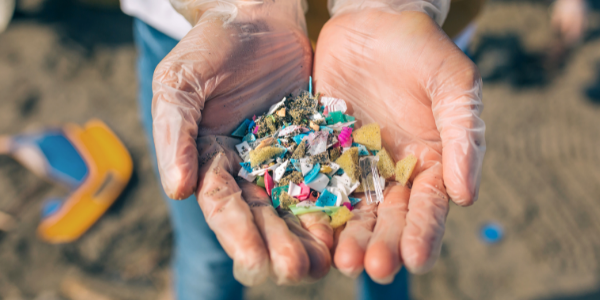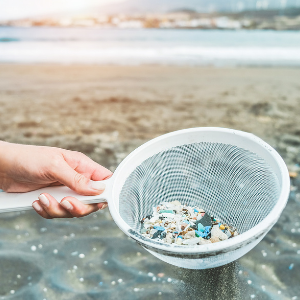Microplastics in Drinking Water

By: Steven Lambert | May 05, 2021
Microplastics
Our lives have become entwined with the use of plastic products. We are dependent on plastic for clothing, housewares, containers, automobiles, televisions, telephones, cosmetics, and much more. The amount of plastic produced is roughly 300 million metric tons per year. Eventually, these plastic products form large debris fields and are the most prevalent marine debris found in our oceans and great lakes.
As the plastic in the environment degrades, it creates microplastics. Microplastics are any plastic particle the size of a sesame seed or smaller.
- What impact do microplastics have?
- Where do microplastics congregate?
- How common are microplastics?
- How do we prevent microplastics?
These questions largely go unanswered, as research is still in its infancy. Drinking water and the environment are under serious scrutiny regarding the presence of these microscopic substances.
Research
On August 8, 2020, the U.S. Environmental Protection Agency (EPA) announced the award of nearly $100,000 in grants to address microplastic pollution in Lake Tahoe, California. The purpose was to identify where microplastics accumulate in the lake and find methods of preventing it. The study found that in Lake Tahoe, microplastics did not enter the water through wastewater or commercial shipping; it is believed the primary source of the lake’s plastic pollution was litter.
The State of California mandated the removal of microplastics from drinking water. Still, immediate compliance with the mandate was impossible since there was no solution to reduce, let alone eliminate, exposure successfully.
Southern California Coastal Water Research Project (SCCWRP) has held workshops gathering data and identifying the ways microplastics affect animal and plant life. The workshops prioritize the most concerning characteristics of microplastics and identify critical thresholds. The findings are recorded and made available through a series of webinars on their website.
Early Findings
 One study found that 93% of bottled water and 92% of tap water contained microplastics. It is estimated that humans are consuming roughly 5 grams of plastic every week and 250 grams every year. That’s more than half a pound of plastic every year! The ingested plastic can physically damage organs and put hazardous chemicals into the bloodstream. It has been strongly recommended that water not be consumed from plastic containers.
One study found that 93% of bottled water and 92% of tap water contained microplastics. It is estimated that humans are consuming roughly 5 grams of plastic every week and 250 grams every year. That’s more than half a pound of plastic every year! The ingested plastic can physically damage organs and put hazardous chemicals into the bloodstream. It has been strongly recommended that water not be consumed from plastic containers.
Additional research is needed to determine the delivery of microplastics in treated water supplies from various sources and processes. The development of reliable analysis method(s) is of utmost importance.
The determination of the health effects of consumption of microplastics and determining the allowable maximum contaminate level (MCL) is necessary. By knowing allowable MCL, treatment goals can be set.
Reducing Microplastics
Some steps have already been taken to reduce the impact of microplastics. The Federal Microbead-Free Waters Act of 2015 banned the use of plastic microbeads in personal care products and cosmetics.
Initial studies indicate that current wastewater and drinking water treatments are removing more than 90% of microplastics.
Consumers can help limit the introduction of microplastics into the environment by doing the following:
- Stop using bottled water.
- Drink filtered water in a reusable container.
- Limit using single-use plastics like shopping bags, straws, and utensils.
- Buy non-synthetic clothing or get a laundry ball to catch microfibers from synthetic clothing.
- Air-dry laundry.
- Reduce meat and fish consumption.
Possible Solutions
Can we rethink single-use plastic products such as straws, cups, bags, and food packaging?
Can plastic producers contribute to a “buy–back” fund paying the user a fee for returning containers for recycling?
Are there ways to improve garbage collection and recycling systems to ensure that waste ends up in the correct place?
Can a program be developed to reduce environmental pollution by plastics in general? For instance, in Europe, about 30% of plastic is recycled. In the United States, that number is only 9%.
At the very least, water suppliers and regulators should continue to prioritize removing microplastics from our drinking water. As part of water safety planning, water suppliers should ensure that control measures are effective, research is coordinated, and share findings for evaluations. Currently, it is a scattered effort with multiple theories and conclusions.
A lot must be done. Regulations, if required, must be promoted and made widely known. The potential seriousness of this situation cannot be ignored. The microplastics are in our water. We must find additional methods to reduce contamination.

